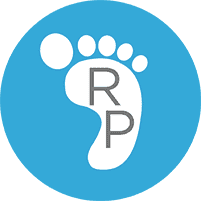 Plantar plate injuries are a common yet often misunderstood cause of foot pain, particularly in the ball of the foot. These injuries involve damage to the plantar plate, a thick ligament that supports the joints in the ball of the foot and stabilizes the toes. Without proper care, these injuries can lead to long-term discomfort and structural problems in the foot.
Plantar plate injuries are a common yet often misunderstood cause of foot pain, particularly in the ball of the foot. These injuries involve damage to the plantar plate, a thick ligament that supports the joints in the ball of the foot and stabilizes the toes. Without proper care, these injuries can lead to long-term discomfort and structural problems in the foot.
At Rahul Patel, DPM, D. ABFAS, FACFAS, we specialize in diagnosing and treating plantar plate injuries using both conservative and surgical approaches. Below, we explore everything you need to know about this condition, its symptoms, diagnosis, treatment options, and recovery.
What is a Plantar Plate Injury?
The plantar plate is a fibrous ligament located on the underside of the foot. It connects the metatarsal bones to the phalanges (toe bones), providing stability and preventing the toes from spreading or drifting out of position.
A plantar plate injury can occur due to excessive stress, trauma, or repetitive activities that strain the ligament. This can result in partial tears, complete tears, or inflammation of the plantar plate.
Symptoms of Plantar Plate Injuries
Patients with plantar plate injuries often report:
- Pain in the ball of the foot, particularly under the second or third toes.
- Swelling and tenderness in the affected area.
- Difficulty walking or bearing weight on the foot.
- A sensation of instability or “giving way” in the toes.
- Toe deformities, such as hammertoe or crossover toe, which may develop if the condition progresses.
Diagnosing Plantar Plate Injuries
Proper diagnosis is crucial for effective treatment. At our office, Dr. Rahul Patel employs a comprehensive approach to pinpoint the cause of your discomfort:
- Clinical Examination: A thorough physical exam evaluates the range of motion, tenderness, and signs of instability in the toes.
- Imaging Tests:
- X-rays may reveal any associated toe deformities or fractures.
- MRI or Ultrasound is often used to visualize the plantar plate and assess the extent of the injury.
- Diagnostic Maneuvers: Specific tests, such as the “drawer test,” assess ligament stability and confirm a plantar plate tear.
Treatment Options for Plantar Plate Injuries
Conservative Treatments
Mild to moderate plantar plate injuries often respond well to non-surgical treatments, including:
- Rest and Activity Modification: Reducing activities that place stress on the foot, such as running or high-impact sports.
- Orthotics or Footwear Adjustments: Custom orthotics or shoes with a metatarsal pad can offload pressure from the injured area.
- Taping or Splinting: Techniques to realign and stabilize the toes.
- Anti-inflammatory Medications: Nonsteroidal anti-inflammatory drugs (NSAIDs) to manage pain and swelling.
- Physical Therapy: Exercises to strengthen surrounding muscles and improve foot mechanics.
Surgical Treatments
If conservative measures fail or the injury is severe (e.g., a complete tear), surgery may be necessary. Surgical options include:
- Direct Repair of the Plantar Plate: The torn ligament is sutured back into place to restore stability.
- Realignment Procedures: Correcting any associated toe deformities, such as hammertoe or crossover toe.
- Metatarsal Shortening Osteotomy: Adjusting the length of the metatarsal bone to reduce strain on the plantar plate.
Recovery and Prognosis
Recovery time varies depending on the severity of the injury and the treatment method:
- Conservative Treatment: Most patients see improvement within 6–12 weeks.
- Surgical Treatment: Recovery typically involves 6–8 weeks of limited weight-bearing, followed by physical therapy to restore function.
With proper care, most patients achieve significant pain relief and restored mobility.
Comprehensive Q&A Section
Q: What causes plantar plate injuries?
A: Plantar plate injuries can result from repetitive stress, high-impact activities, trauma, or wearing unsupportive footwear.
Q: How can I prevent plantar plate injuries?
A: Prevention includes wearing supportive footwear, avoiding prolonged high-impact activities, maintaining a healthy weight, and addressing foot mechanics issues with orthotics if necessary.
Q: When should I see a podiatrist for foot pain?
A: Consult a podiatrist if you experience persistent foot pain, swelling, or difficulty walking, as these may indicate a plantar plate injury or other foot conditions.
Q: Is surgery always necessary for plantar plate injuries?
A: No, most mild to moderate injuries respond well to conservative treatments. Surgery is typically reserved for severe cases or those that do not improve with non-surgical measures.
Q: Will I be able to return to sports or high-impact activities after treatment?
A: Yes, many patients return to their regular activities after completing the recovery process. Your podiatrist will guide you on safely resuming activities.
Contact Us for Expert Care
If you suspect a plantar plate injury or are experiencing foot pain, don’t wait to seek treatment. At Rahul Patel, DPM, D. ABFAS, FACFAS, we offer personalized care to help you get back on your feet.
📍 Address: 245 5th Ave, Suite 310, New York, NY 10016
📞 Phone: (347) 851-1491
Schedule your consultation today and take the first step toward pain-free living!
